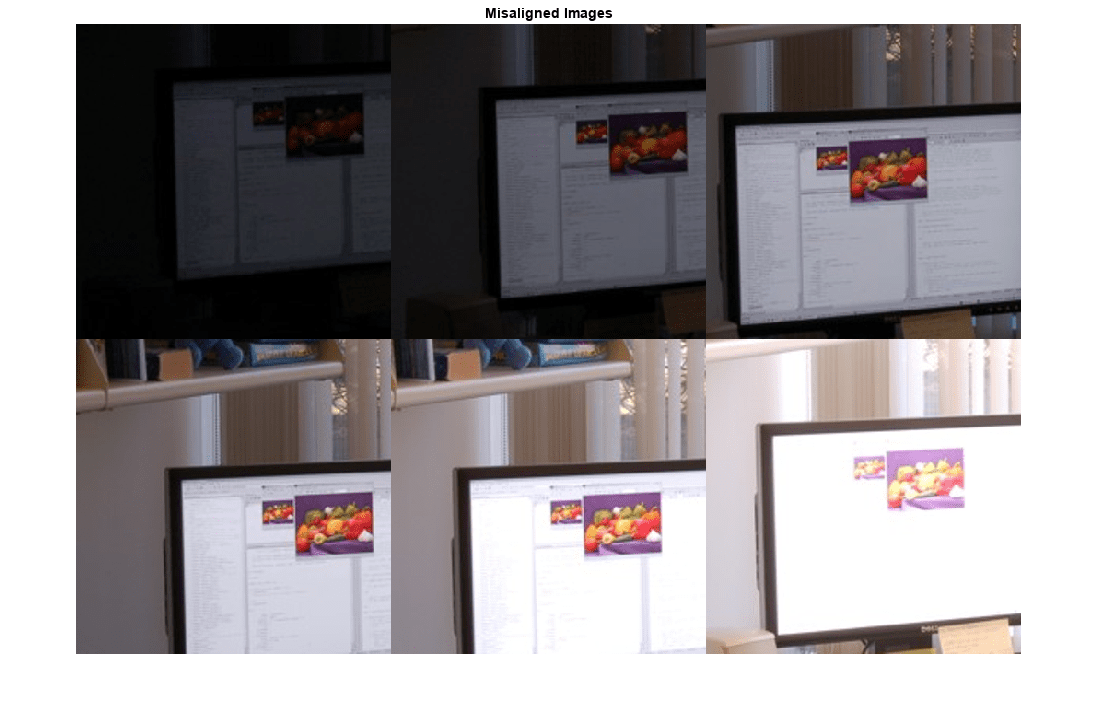imregmtb
Register 2-D images using median threshold bitmaps
Description
[
registers an arbitrary number of moving images R1,R2,...,Rn,shift] = imregmtb(M1,M2,...,Mn,F)M1,M2,...,Mn
with respect to the fixed (reference) image, F, using the
median threshold bitmap technique. The registered images are returned in
R1,R2,...,Rn, and the estimated displacement of the
registered images is returned in shift.
The median threshold bitmap technique is effective for registering images captured
with variable exposures. imregmtb considers only translations,
not rotations or other types of geometric transformations.
Examples
Input Arguments
Output Arguments
References
[1] Reinhard, E., W. Heidrich, P. Debevec, S. Pattanaik, G. Ward, K. Myszkowski. High Dynamic Range Imaging, Second Edition. San Francisco, CA: Morgan Kaufmann Publishers Inc., 2010, pp. 155–170.
Extended Capabilities
Version History
Introduced in R2018aSee Also
blendexposure | imtranslate | imregister | imregcorr | imregmoment (Medical Imaging Toolbox)

